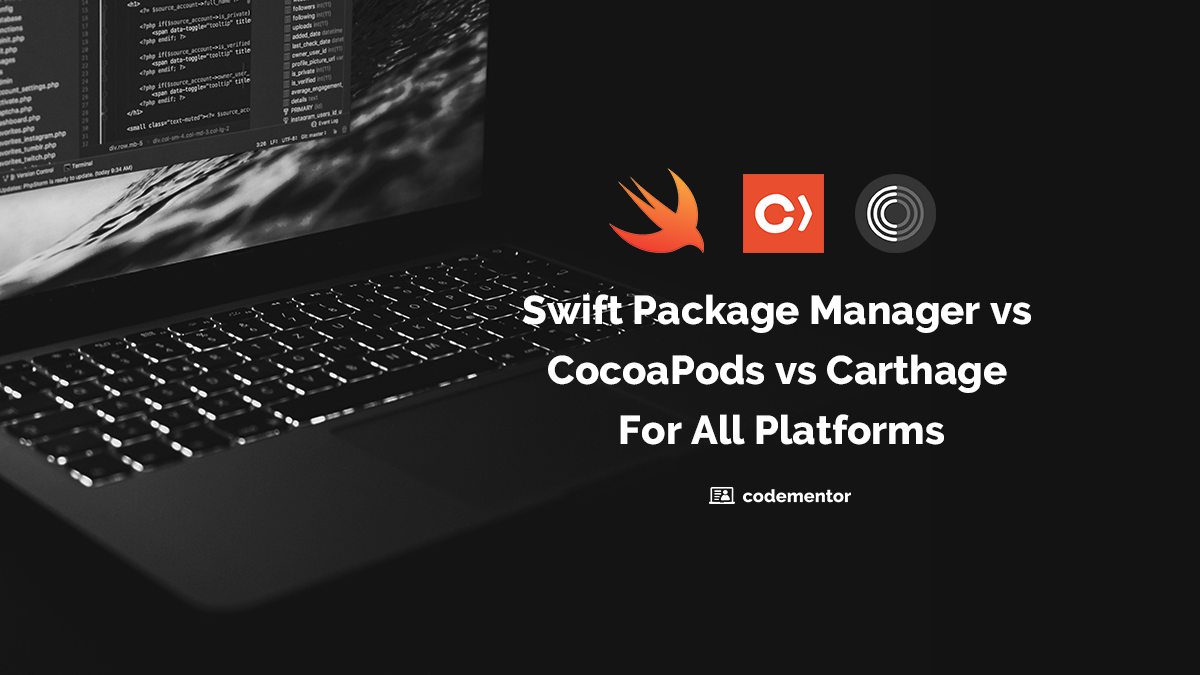In the last two years, virtual events have gained a lot of traction and popularity. By removing the geographical constraints, developer virtual events are more accessible as anyone with access to the internet can attend or host their own events.
The second part of this three-part blog series will provide you with our recommendations on how to:
- Prepare for your talk,
- Create slide decks, and
- Host engaging developer events.
For more guidance on finding the right topic, target audience, event title, and event description, check out the first article. In this post, we'll cover:
Pick a focused topic and virtual event format
The best virtual events for developers are well-planned and executed. But before you can think about hosting an event, there’s some groundwork to do. Two crucial aspects of planning out a well-structured talk: picking a focused topic and coming up with a high level structure.
Pick a narrow topic for your developer event
You probably already have some ideas about what you want to talk about for your virtual event. The key is to decide what angle you want to take.
For technical developer events, you can talk about tech stacks, libraries, tools, best practices, or even bad practices you’ve seen. Your talks can also be career-focused, where you share about non-technical skills that developers should have to further their career.
Whether it’s programming-focused or career-related events, there are endless topics you can speak on. The key is to narrow your topic down so you can:
- Explain your point of view and/or technical concepts in depth.
- Keep your audience engaged by sticking to the time.
- Allow enough time for the attendees to ask questions.
When in doubt, a good place to start is with what you know — and what you’re comfortable talking about. As Veerle, Managing Direct and Head of Data Science at Analytic Health, shared:
If you choose a topic that you’re already busy with on a day-to-day basis you will be able to talk practical as well and give meaningful examples (and it requires less time preparing because you already know most of it 😉).
Select a virtual format
Next up is choosing the format that suits your online event. Some common formats for developer virtual events include:
- Presentations
- Interviews
- Live coding sessions
- Workshops (e.g. debugging, code review, etc.)
- Discussions (e.g. two speakers sharing different sides of a topic)
This is linked to topic selection: as you’re narrowing down the focus of your talk, the format of your talk should become clearer as well.
To keep your audience interested and engaged, here are some common formats and how long online events should be:
Come up with a high level structure
Now that you’ve picked your event topic and format, you can start forming your event’s high level structure and some details. Make sure the talk includes:
- One overarching idea you want to share
- Three to four points to support the main idea
- Real-world examples (for both technical and career-related topics)
Short stories and anecdotes can also help you convey your ideas better. One way to break the ice is to start your online events with a short story that demonstrates how you’ve experienced the problem you’ll address. You can also end with a story that sums up your talk. But remember: if the stories aren’t directly relevant, cut them out!
To help you get started, we’ll use two examples — one technical and one career-related — to demonstrate the process of developing a high level structure. Feel free to treat the following examples as your event program template or virtual event planner.
Virtual events structure example: Technical topic
Let’s say you’re a front-end developer who works with JavaScript. You have come across dependency injection a few times and think that it’s a bad practice. Your point of view might be:
“JavaScript is not a purely class based language and is flexible and dynamic. Dependency injection forces you to use a class in JavaScript when you don’t need to.”
To help your audience understand your point of view and find better alternatives to dependency injection, the 3-4 main sections of your talk could be:
- Define: What is dependency injection
- Use cases/examples: What are some examples of dependency injection
- Argument: Why you shouldn’t use dependency injection
- Solutions/conclusions: What are the alternatives to dependency injection
Online events structure example: Career-related topic
If you want to tackle a broad topic like “How to improve your programming skills,” you have to spend a bit more time deciding on what to focus on. For demonstration purposes, let’s say you want to focus on junior developers, and from what you’ve experienced and seen, you think:
“As junior developers, ramping up our programming skills to fit the company’s needs is crucial. In addition to traditional class-based learning, finding mentors can help us significantly in our learning journey.”
In this case, the title of your online event might be be “The fastest way to learn programming as a junior developer.” Once again, you want to provide some basic information before you jump in. You also want to make sure to use real-world examples and pull from your own experience to make your talk more relatable and authentic. Here’s how you might structure this talk:
- Opinion/examples: Why you need to improve your programming skills as a junior developer
- Status quo: Learning resources for junior developers
- Experience: How mentors fast-tracked my learning experience
- Conclusion: Mix and match learning methods to improve your programming skills
Regardless of the topic you choose, it’s crucial to flesh out your experience with tangible real-world examples. A clear structure helps your audience to follow along. With 3-4 key points, you should spend no more than 5 minutes on each. If you’re unable to keep it under 5 minutes, cut down on the number of points you address. You can always host multiple online events and turn them into a series.
Put together great slide decks for virtual events
Why do you need slide decks for developer online events?
Slide decks are the main content that guides your audience through your online event. They serve multiple purposes:
- Helps you remember key points
- Provides visual cues for your presentation
- Keeps things concise and on schedule
- Delivers (only the) necessary information
Additionally, developers who attend tech conferences and talks often ask for copies of speakers’ slide decks before or after the presentation. As the presenter, you can decide if you want to share your slide decks. We'll walk through how to create a slide deck for developer online events in this section.
How to organize your slides
If you’re a veteran speaker or have attended a lot of developer conferences and online events, you're probably already familiar with creating engaging slide decks. But if you’re not sure how to organize your slides, here’s a general guideline for how your slides can be organized:
Introduction slides
- 1st slide: Title of your talk
- 2nd slide: Short self-introduction
- 3rd slide: Agenda of the event
Main section slides
- ~3 slides for each main section
- First slide: Title page for each section of your talk
- The other 2~3 slides:
- Questions, statements, or definitions
- Technical concepts or supporting stats to build up your case
- Sample code with the important parts highlighted
- Memes, gifs, data visualizations, and illustrations that convey your point
Wrap up slides
- ~1-2 slides
- Bullet point summary of what was covered in the talk
- A list of resources for your audience
- A meme or gif to close up the talk (if relevant)
Here’s a short list of some do’s and don’ts for building a great slide deck:
You can always find slide deck templates to help you spend less time on design and more on delivering quality content for your online events!
Create engaging online events experience
Now that you’re finished with all the prep work, it’s time to host your online event! Here are some tips for every step of your online event to help you succeed.
Before the virtual event starts
For your audience to be able to follow, see, and hear you throughout the entire duration of your event, make sure your environment is optimized for hosting online events:
- Your Internet connection is stable
- Your camera and mic work, and set at a suitable distance/angle
- You’re at a spot that’s well-lit and quiet
- Your background isn’t distracting
Before your online event officially starts, join the virtual event meeting room to test out the software to make sure everything runs smoothly. If possible, ask a friend to join you virtually to double check the video and sound quality. Additionally, feel free to share your slides with your audience ahead of time so they can familiarize themselves with your talk and come up with questions before the event.
Starting your online event
Before you officially start your talk, you might want to give the attendees 2-3 minutes to join. About half of the audience will join either early or on-time, while the other half will join within 3-5 minutes of the official start time. While you’re waiting for other attendees to join, here are some things you can do to keep your audience engaged:
- Play some background music to lighten up the mood
- Let your audience know you’ll start the event in 2-3 minutes
- Ask the attendees a question or two verbally and in the chat, some examples include:
- Where is everyone joining from?
- What do you hope to learn from this event?
- What is the biggest challenge you’re currently facing at work?
- Explain how you’ll run the event and Q&A to your attendees
- Post important information and announcements in chat (e.g. code of conduct, Q&A format, GitHub repo, links, etc.)
Once you’re ready to start, turn off your background music and let the crowd know the online event will be starting soon.
During your virtual event
For the most part, you’ll be focused on presenting and speaking. But since you’ll also be answering questions and hosting the event, there are some additional things you want to keep in mind.
For presenting:
- Be careful not to speak too fast
- Make sure you’re engaged and excited
- Avoid mic static but make sure your audience can hear you
- Try not to read off of your screen
- Speak to your audience like you would at in-person events
For hosting:
- Admit attendees if your virtual meeting room is not public
- Keep an eye on the chat for incoming comments and questions
- Default your attendees to mute if you don’t want intrusions during your talk
- Use your phone’s timer to pace yourself
For Q&A:
If you’d like all questions to be answered at the end of the talk, remind your audience that you’ll address the questions at the end and ask them to add their questions to chat if they’d like to. If you want your virtual event to be more interactive, pause at the end of each section to ask the attendees if they have any questions.
Regardless of the format you choose, when it’s time for the last question, remember to let the event attendees know.
Ending the online event
After you’ve answered the last question, you can naturally segue into the closing part of the virtual event.
Thank the audience for joining and send them important links in the chat (e.g. social media, GitHub repos, future online events, etc.). If there are any unanswered questions, remind the attendee to post their questions in the event page comment section. Before you officially end the meeting, make sure to let the crowd know that the event is over. Here are some friendly phrases you can use to end the talk:
- That’s all for today, thanks for joining me and feel free to comment on the event page with any questions!
- That’s it for our event today, feel free to message me on Twitter if you have any questions!
- That’s a wrap for today! Thanks for joining and see you soon.
Once attendees start leaving the virtual meeting room, you can end the meeting for all. There are some other follow ups to do after you finish your online events, but for now, take a break, go on a jog, or celebrate a bit for successfully hosting a great online event!
Wrap up & next steps
We’ve just walked you through preparing for and hosting a developer online event. By narrowing down your topic and setting the high-level structure, you’re able to focus your talk so it conveys your knowledge and sharing in the most effective way. You can also share the event recordings so other developers can continue to learn and be inspired by the event.
In the next and last part of this three-part series, we’ll share more about promoting your online events and engaging with your audience after the event. If you’re not sure how you can promote your events to the right developers, the last blog post will provide you with some tips and walk you through how Codementor Events will help with that.
If you’re ready to share your experience with other developers, create events and become a Codementor Events speaker now!


